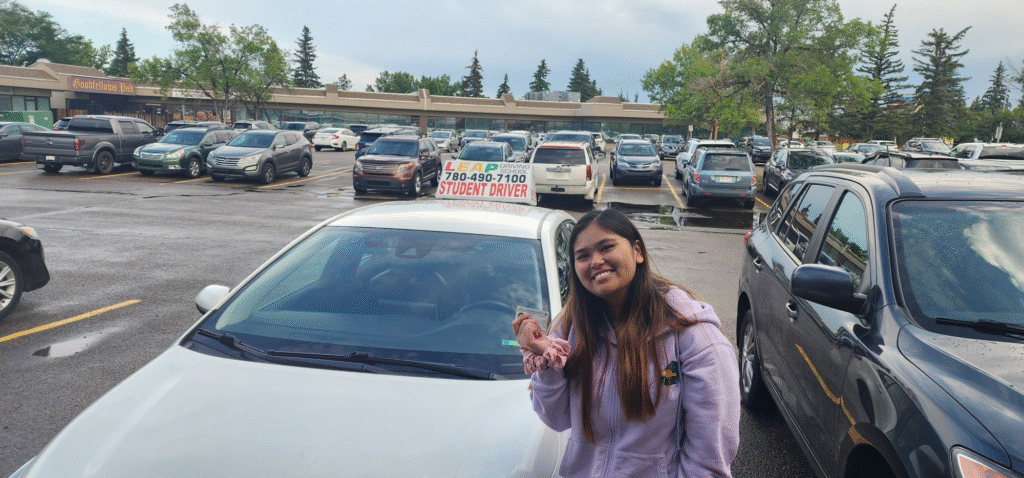An Introduction to Skill-Building from a Driving School in Edmonton
Learning how to drive marks a powerful step toward independence for teens. However, driving is not just a mechanical activity it’s a blend of judgment, awareness, and adaptability. For many young drivers in Edmonton, starting with the right guidance can shape a long-term approach to road safety and responsibility.
A structured program such as those offered by a Driving School in Edmonton helps learners internalize the basics, handle real-life conditions, and build decision-making confidence. But before any learner merges into traffic, there are important driving practices that should be part of their early routine.
Why Teen Drivers Need a Different Approach
Teen drivers face unique challenges. Inexperience, distraction, and overconfidence can lead to misjudgments behind the wheel. According to several transportation studies, the risk of collisions is highest in the initial months after licensing often due to lack of exposure to diverse road environments.
This is why lessons from a professional Driving School in Edmonton often emphasize defensive skills, emotional control, and frequent practice in different driving conditions. These factors help teens develop a more balanced driving approach and make better split-second decisions.
Let’s break down the essential practices every teen driver should be learning from day one.
How to Build Driving Confidence: Step-by-Step Practices
1. Understand the Vehicle Before You Drive
Operating a vehicle is more than just steering and braking. Teen learners should begin by understanding how the vehicle responds to inputs.
- Know the Controls: Learn the functions of pedals, indicators, gear shifters, and dashboard lights.
- Mirror and Seat Adjustments: Proper posture and mirror alignment create a more responsive driving experience.
- Hand Placement: Stick to 9-and-3 or 10-and-2 positioning for better wheel control.
A Driving School in Edmonton will typically spend several sessions ensuring these basics are second nature before moving on to complex maneuvers.
2. Limit Distractions Before They Become Habits
The teenage brain is still developing impulse control. That’s why early habits matter:
- Phone Use: Silence phones or keep them in the glovebox to remove temptation.
- Passenger Rules: Some local laws limit teen passengers—there’s a reason for this.
- Avoid Eating on the Go: Meals and snacks can wait. Stay fully present behind the wheel.
Students at a Driving School in Edmonton often role-play scenarios involving distractions, learning how to refocus attention quickly and safely.
3. Respect Speed and Road Conditions
One of the biggest early mistakes new drivers make is misjudging speed—especially in adverse weather or unfamiliar terrain.
- Stick to Limits: Speed signs reflect local hazards and are set for realistic stopping distances.
- Drive Slower in Rain, Snow, or Fog: Reduced traction requires longer braking distances.
- Use the 2-Second Rule: Keep at least two seconds of distance behind the car in front (more in bad weather).
These habits are central to the curriculum at any Driving School in Edmonton, especially during winter or night sessions.
4. Drive Defensively, Not Aggressively
Driving is not about winning or proving a point. It’s about staying safe while navigating a shared space.
- Check the Road Ahead: Avoid fixating on the bumper in front of you. Scan for pedestrians, traffic signals, and construction zones.
- Shoulder-Check and Mirror Scan: Every lane change should involve mirror checks and blind spot awareness.
- Yield When in Doubt: Don’t assume others will stop anticipate their mistakes instead.
Defensive driving is often taught during scenario-based training at a Driving School in Edmonton, helping teens develop a calm, observant mindset.
5. Practice Parking and Turning with Intention
Parking lots and narrow streets can overwhelm new drivers. Confidence comes with repetition, but good technique matters too.
- Parallel Parking: Use fixed reference points to guide your entry and alignment.
- Reverse Slowly: Control and visibility matter more than speed.
- Try Different Angles: Practice perpendicular, angled, and hill parking in a variety of spaces.
During in-car sessions at a Driving School in Edmonton, students learn how to recognize and correct small mistakes in tight environments.
6. Don’t Avoid Night or Highway Driving
Teens often delay learning nighttime or highway driving, but avoiding these experiences only increases stress later.
- Low Light Navigation: Learn how headlights, streetlights, and other vehicle lights affect visibility.
- Merging Techniques: Highways require judgment, spatial awareness, and timing.
- Stay in the Right Lane: New drivers should remain in slower lanes until they’re more comfortable with speed and traffic flow.
Night driving is typically a focus in the final lessons at a Driving School in Edmonton, giving learners experience when supervision is still available.
7. Stay Calm Under Pressure
Stress can interfere with decision-making. Learners should work on reducing anxiety while driving.
- Breathe and Refocus: Mistakes happen. What matters is how you recover.
- Drive Regularly: Consistent exposure builds familiarity and lowers stress.
- Get Honest Feedback: Professional instruction at our driving school in Edmonton often includes real-time coaching, which helps build long-term confidence.
Driving Isn’t a Test—It’s a Skillset
Too often, teen drivers focus on passing the road test. But real-world driving goes far beyond exam routes. By practicing focus, defensive habits, adaptability, and emotional control, teens lay the groundwork for safer long-term driving.
A certified Driving School in Edmonton doesn’t just prepare students for a test it helps them build habits that translate to real-world safety. Whether it’s merging onto a highway at dusk or parallel parking in tight downtown spaces, teen drivers who start with structure and support tend to handle challenges with more awareness.

